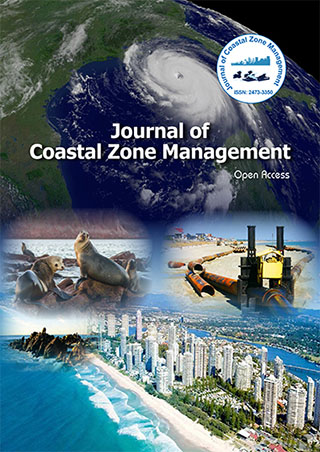Indexed In
- SafetyLit
- RefSeek
- Hamdard University
- EBSCO A-Z
- OCLC- WorldCat
- Publons
Useful Links
Share This Page
Journal Flyer

Open Access Journals
- Agri and Aquaculture
- Biochemistry
- Bioinformatics & Systems Biology
- Business & Management
- Chemistry
- Clinical Sciences
- Engineering
- Food & Nutrition
- General Science
- Genetics & Molecular Biology
- Immunology & Microbiology
- Medical Sciences
- Neuroscience & Psychology
- Nursing & Health Care
- Pharmaceutical Sciences
Field studies of seabed, ocean and water quality parameters in remote locations
3rd International Conference on Coastal Zones and Oceanography
May 18-19, 2018 Singapore
Oleg Makarynskyy
Australian Institute of Marine Science, Australia
Scientific Tracks Abstracts: J Coast Zone Manag
Abstract:
Statement of the Problem: Remote area monitoring campaigns, which may provide data for detailed analyses ambient conditions and, if necessary, for model validations, are expensive and thus rare. This study was an exception; it aimed at assessing seabed sediment properties and monitoring oceanographic and sediment transport conditions using acoustic and optical instrumentation in a tropical, semi-enclosed, meso-tidal harbor in North Australia. Methodology: The first stage of the campaign was focused on the sediment properties; several sediment cores and acoustic sediment thickness surveys of the area revealed a layer of fine, soft sediment of variable thickness covering the seabed. The second stage comprised collection and processing of wind and rainfall data, sea level, wind wave and water current measurements and observations of sediment dynamics using four acoustic Doppler current profilers and optical turbidity sensors. Water column profiling was performed to assess water temperature, salinity and turbidity using a Seabird CTD profiler, and suspended sediment concentrations and particle size distributions using a LISST. The observation period covered several neap-spring tidal cycles during both wet and dry seasons, thus representing a significant range of met-ocean condition variability in North Australia. Finding: An analysis of particle size distribution from the collected sediment cores suggested significant variability of the sediment material vertically, within the cores and among the coring sites. The magnitudes of echo intensity and depth from the bottom track suggested that the upper most part of the sea bed was mobile and fluid. The profiling of suspended sediment concentrations indicated higher concentrations during the wet season and lower concentrations during the dry season; there generally was an increase of concentration with water depth. Conclusion: Based on the conducted comparative analysis of the met-ocean data and sediment concentrations, most favorable conditions for sediment re-suspension and transport were identified.
Biography :
Oleg Makarynskyy has over 25 years’ project management experience and extensive skills in the areas of met-ocean numerical modeling and data collection, processing, integration and analysis. He has led multiple research field campaigns, hydrodynamic, wastewater discharge and dredging studies and oil spill assessments including sensitivity mapping and contingency planning, toxicity and risk of releases, hydrocarbon weathering, deterministic and stochastic spill trajectory modeling.
